
Pilgrimage in Early Christian Tradition
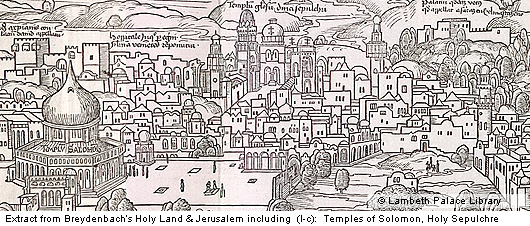
Development of Christian Holy Places
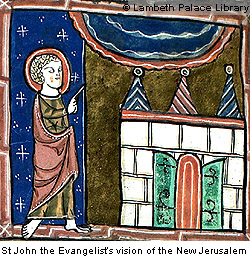
During the first three centuries after Christ, the Church seems to have focused primarily on the New Testament teaching that God is present everywhere in the world through his Holy Spirit, rather than in special places (see Pilgrimage in the Bible). This shift from the traditions of Judaism may have been reinforced by the destruction suffered by the city of Jerusalem in the years following the death of Christ. The occupying Romans destroyed the Temple in 70 CE and the whole city was razed to the ground following a Jewish revolt in 135 CE. Other cities, such as Caesarea, Antioch and Rome, now became more important in the organisation of the Church. Jerusalem was renamed Aelia Capitolina and a temple to the pagan goddess Venus was built on the Temple Mount. Jerusalem, the city of God, seemed to have been obliterated.
Surviving records of Christian visitors to Palestine during the second and third centuries CE show them to have been concerned with learning about the land of the Bible and visiting the small community of Christians who still lived there, rather than visiting 'holy places'. Jerusalem appears to have been a site of limited historical interest rather than of special devotional significance.
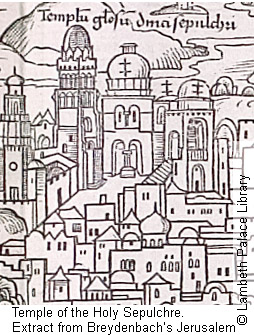
In the early fourth century, however, came a major shift in Christian attitudes. The key catalyst was the conversion of the Emperor Constantine to Christianity in 313. Constantine brought to his new faith concepts of sacred places and sacred buildings derived from Roman and Greek pagan religion (see Religious journeys in the Greek and Roman worlds). Although he never visited Jerusalem himself, the Emperor instituted an extensive building programme in Palestine and his mother Helena oversaw the 'recovery' of a number of important Christian sites. Great churches were built - on the site of the 're-discovered' tomb of Christ, on the Mount of Olives and in Bethlehem. A 'Holy Land' emerged, creating a new sacred geography which offered an added dimension of spiritual experience. Cyril (c.320-?386), Bishop of Jerusalem from c. 350, claimed 'Others only hear but we both see and touch' (Catechetical Lectures, 13:22).
Fourth century accounts by visitors show how attitudes were changing. The anonymous pilgrim of Bordeaux who arrived in 333 to explore the land of the Bible has left a terse collection of notes listing sites connected with biblical events. The account given by Egeria, who visited Palestine some fifty years later, between 381 and 384, shows a much more devotional approach. Although keen to learn about the biblical sites, Egeria also spends time in worship at various places, listening to appropriate readings from the Bible and praying. Egeria's narrative illustrates the new elements which have emerged: the veneration of relics, a stress on worship at holy sites, and devotional experience heightened by reflecting on the scriptures in places where events such as the Crucifixion had actually taken place (The Pilgrimage of Egeria).
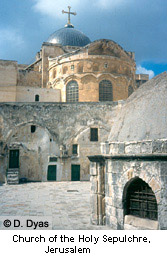
St Paula visited the holy sites c. 386. Jerome, writing some twenty years later, describes her highly emotional response, which in part anticipates that of Margery Kempe many centuries later. Jerome records Paula's enthusiastic devotion: 'She fell down and worshipped before the Cross as if she could see the Lord hanging on it ... Her tears and lamentations [at the Tomb of the Resurrection] are known to all Jerusalem' (Jerome, Letter 108, To Eustochium). Paula is described not only visiting holy places but also visualising, and re-living, the biblical events believed to have happened there. Such imaginative entering into the biblical narrative would become an important aspect of medieval spirituality, evident both in the responses of those such as St Birgitta (Bridget) and Margery Kempe who visited the biblical sites, and those who could only undertake 'pilgrimages of the imagination' from afar.
The changes did not go unopposed. The appeal of 'seeing and touching' and imaginative entering into the life of Christ was clearly very strong but there were major theological questions to be answered. How could an omnipresent God be more accessible in one place than another? Would travelling to so-called 'holy places' help or hinder the longer life-journey of daily obedience to which every Christian was called? St Gregory of Nyssa pointed out that Jesus never commanded his followers to go on pilgrimage and stated firmly that 'Change of place does not effect any drawing nearer unto God' (Epistle 2). Jerome himself declared 'Nothing is lacking to your faith although you have not seen Jerusalem' (Letter 58). There were other concerns, both practical and moral. Pilgrimages could be expensive in time and resources and might expose pilgrims to physical and moral dangers. Despite all these concerns, however, pilgrimage to holy places continued to flourish. The theological paradox which lay at its heart had not, however, been resolved and would surface many times during the centuries which followed.
Development of the Cult of the Saints
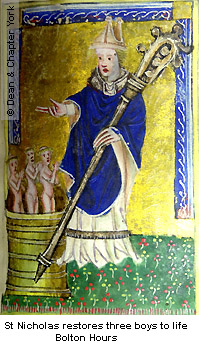
Christian theology did not (at least in theory) accept that certain places possessed inherent holiness but Christians were prepared to honour people. During the early centuries of the Church, and in particular, from the fourth century onwards, certain places came to be seen as holy through association with the Trinity (usually Jesus Christ) or with a person whose closeness to God had given them particular holiness. The development of the cult of the saints was crucial in the growth of place-orientated pilgrimage. It was the perceived presence of the saints through their relics that drew pilgrims and helped to establish a new sacred geography not only in the Holy Land but across Christendom, as relics were transferred from one place to another and new local saints emerged. The shrines of these early saints and their successors would provide the majority of pilgrimage centres in subsequent centuries.
In the New Testament the word 'saints' (Gk. hagioi) was used of all Christian believers. By 200 CE, however, the term was already being used in a more limited way of Christian martyrs who had died bearing witness to their faith in Christ. Celebration of the day on which the martyr entered heaven developed in time into the observance of saints' days and the offering of masses in their honour. During the age of the martyrs, recognition of sainthood was bestowed within the local community but in time more formal regulation became necessary. Bishops and councils took an increasingly important role in this process, although the first papal canonisation did not take place until 993. As martyrdoms became rarer, outstanding ascetics, bishops, and defenders of the faith were also honoured as saints. The Life of St Anthony by St Athanasius and the Life of St Martin (bishop of Tours 371-97), works which would shape hagiography and concepts of sainthood for centuries, showed men who were not only holy but able to work miracles. The role of the saints also became more clearly defined. As friends of God on earth, they could reasonably be assumed to have particular influence with him in heaven.
De Laude Sanctorum
He who cures, lives. He who lives is present in his Relics. Apostles and Martyrs cure and wash away sin.
Victricius of Rouen (c.330-c.407)
De Laude Sanctorum
By the end of the fourth century those who visited saints' tombs were encouraged to expect spiritual or physical healing. These tombs were now seen as points at which heaven and earth intersected, with the relics of the saint acting as a bridge between the two. Local saints multiplied and the remains of otherwise unknown figures were 'discovered' and revered. The idea of 'transferable holiness' also swiftly took root. For some time, Roman law and Christian teaching both opposed the moving or dismemberment of bodies and 'secondary' relics (items which had been in contact with the bodies of the saints such as cloths or dust) became important. In time the restrictions were eased and small portions of saints' bodies were distributed far and wide. The cult of the saints clearly met a need, offering a tangible bridge between human need and an unseen powerful God.
Opposition to these developments came from both pagans and Christians. Roman law had kept the living and the dead apart, insisting that burials should take place outside city walls, a tradition which the cult of the saints was now undermining. Christian opponents claimed that honouring relics represented a lapse into paganism. In 406, Jerome refuted an allegation by Vigilantius of Gaul who is said to have claimed that something close to a heathen ceremony was being introduced into the church: 'heaps of tapers are lighted, and everywhere a paltry bit of powder, wrapped up in a costly cloth, is kissed and worshipped' (Jerome, Letters, Against Vigilantius, 4). Jerome denies that the martyrs are being worshipped, distinguishing between latria (worship) which was due to God alone and dulia (veneration) which may properly be accorded to the saints.
However, the cult of the saints continued to provoke controversy and raise questions. A religion which asserted that God was present with his people wherever they were was shifting towards an orientation to place which inevitably brought with it conflicting ideas and practices. There was more than a suspicion that the very idea of holy places, the pursuit of material benefits such as healing, the presentation of wax ex voto offerings, the practice of sleeping close to shrines to obtain revelations, all owed more to classical pagan religion than to New Testament Christianity (see Religious journeys in the Greek and Roman worlds). They did, but such objections failed to counteract the growing popular appeal of saints and their cults.
Dee Dyas



